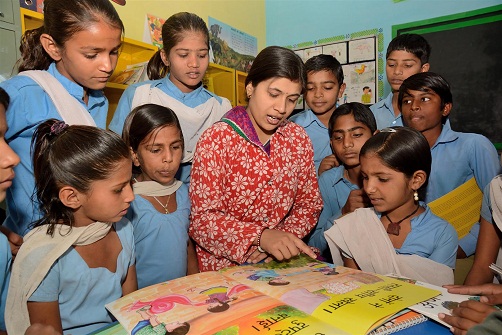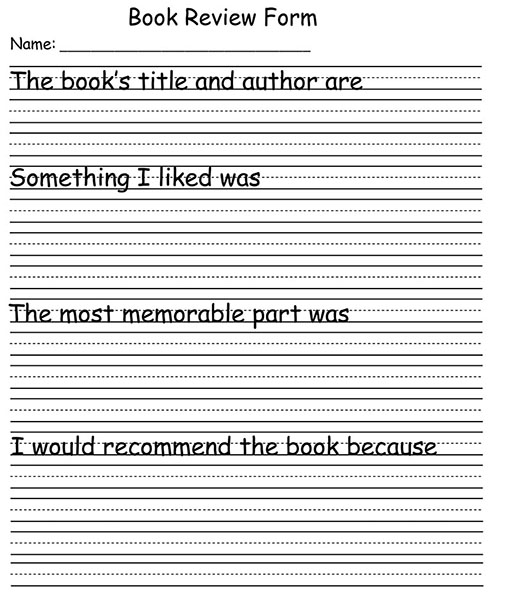2 Book talk
Pause for thought
|
Questions such as these stimulate ‘book talk’. Your answers are all important aspects of being a reader. You will see how one teacher incorporates book talk into her lesson in the case study that follows.
Case Study 2: Encouraging book talk in the classroom
Mrs Rachna is a Class VIII teacher in Bhopal. Here she explains how she went about encouraging book talk among her students.
Until last year, my usual teaching practice involved reading a text aloud to my class and asking my students to complete the associated comprehension questions in the textbook. Following a workshop at my local DIET, I decided that I needed to change my practice if I wanted my students to become more discerning about reading.
I began by choosing a story to read aloud to my class. It was ‘Children at Work’ from the NCERT Class VIII textbook And So It Happened. When I had finished reading the story, I described my response to it as follows: ‘I find this story very sad as I don’t like to read about child workers. However, it is a good adventure for the boy, Velu. I wonder what will happen to him. What do you think?’
I then asked my students to talk about the story with their partner for two minutes. I prompted them with questions such as ‘What did you like?’, ‘What didn’t you like?’ and ‘What did you find puzzling?’ Finally, I invited individual students to share their reactions to the story with the rest of the class.
At first, my students found talking about their responses to stories difficult because they were not used to expressing their opinions and reactions to texts in this way. However, after repeating this type of activity with several fiction and non-fiction reading texts, they became more comfortable about sharing their views. Now they not only feel confident in saying that they don’t enjoy a text, but they can also explain why. They have also started drawing on their background knowledge when discussing the texts, by relating them to their own experiences and indeed the other texts that they talked about and discussed previously. When my students talk freely about texts in this way, I am able to evaluate their understanding more comprehensively than through textbook exercises alone.
While I continue to use the comprehension questions in the textbook as a guide, I always allow for more open discussions about what we read in class.
Pause for thought
|
Reading comprehension does not develop automatically; it must be taught. This is best achieved through the teacher modelling the comprehension process, by thinking aloud and talking about the meaning of the texts with their students.
When students are encouraged to talk about the texts that they listen to or read themselves, they develop the confidence to speak about their reactions and interpretations.
As adults, we can usually choose what we read. We often have preferences over certain types of texts against others. We reflect on our reading and discuss it with others. We should encourage our students to do the same – to choose books that they like and respond intelligently to what they read.
Activity 1: A book talk session

Plan a short book talk session in your classroom. It should last no more than 30 minutes.
Choose a short fiction or non-fiction text. It can be a story, a factual newspaper article, a play script or a poem. Whatever text you choose, anticipate any unfamiliar vocabulary first. By introducing the topic and explaining any unknown terms at the start, you will help to reduce your students’ anxieties and support their comprehension of what follows.
After reading the text aloud, briefly tell your students what you think of it and what thoughts it provoked in you. While it is important to model book talk in this way, initially it is best to do this with care so that you don’t overly influence your students’ own responses to the same text. Follow this by inviting your students to express their reactions by asking them (for example):
- what they liked or disliked about the text
- what they thought of the characters
- whether there was anything puzzling about it
- whether they would recommend it.
Show interest in all the responses that your students offer.
If your class is large, plan a book talk session with a different group of students every day. Set the rest of the class some independent work related to the book talk reading, while you spend time with the small group. By dividing up the class according to their level, you can select texts that are appropriate to each group.
Book talk sessions should not be limited to the texts you read aloud to your students, but can extend to those they read themselves.
You may find it helpful to read the key resource ‘Talk for learning’ at this stage.
Video: Talk for learning |
Activity 2: Student book reviews
You can extend a book talk session by getting your students to write a short review of what they have read. The book review template in Figure 2 can be adapted as you wish. As in the class discussions, all the opinions that your students express in their reviews should be accepted and valued.

In the next section, you will look at the practice of paired reading to support comprehension and enjoyment.
1 Being a reading role model
